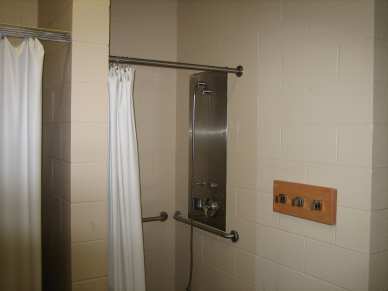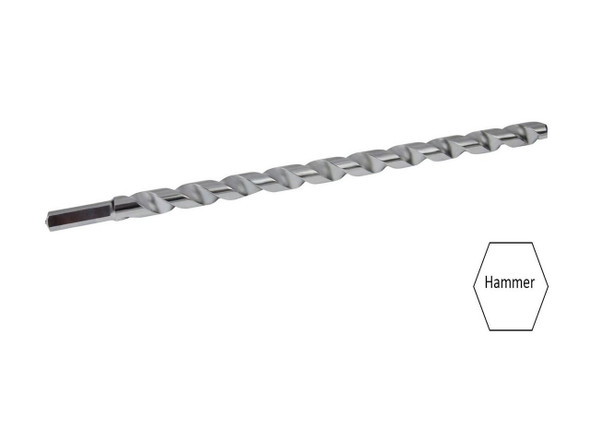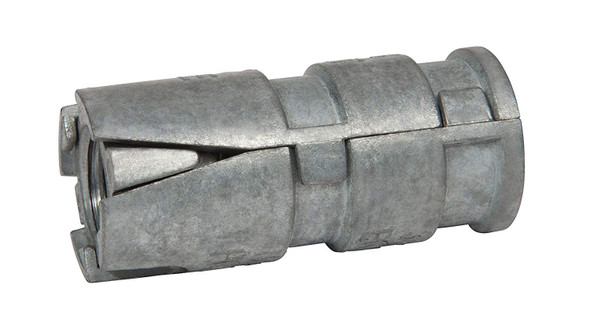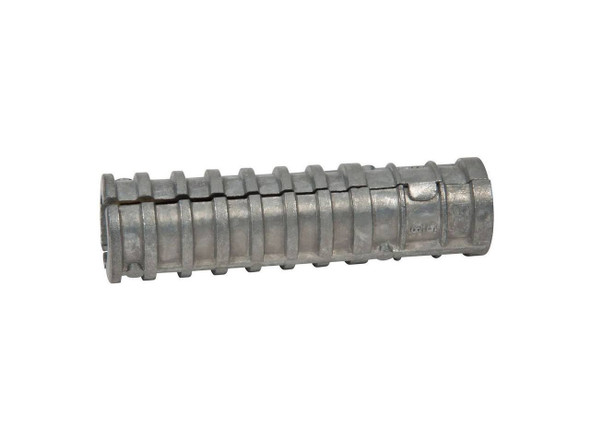CONFAST®
1/4" Double Expansion Anchor, 100/Box
- SKU:
- DE14
- UPC:
- 820274000328
- Availability:
- In Stock, Ships Today!
Description
Products Features
- CORROSION RESISTANT BODY: Anchor body can be used in atmospheres where moisture may be present
- EXPANDS THE WHOLE LENGTH OF ANCHOR: Performs well in base material of questionable strength
- INTERNAL THREADS: Allows for unbolting for non-permanent fastening applications
- NATIONAL COARSE THREADS: Bolts that are required are the most common type available and easily found for purchase
- EACH DIAMETER COMES IN ONE LENGTH: Selection is simple process of picking a diameter and then choosing the anchor
Products specifications
| Bit Size | 1/2" |
| Box Qty | 100 |
| Minimum Embedment | 1-3/8" |
| Thread Type | 1/4" - 20 |
| Minimum Edge Distance | 2-1/2" |
| Minimum Fixture Hole Diameter (In Place) | 9/16" |
| Minimum Fixture Hole Diameter (Hole Spotted) | 1/4" |
| Inside Anchor Diameter-Bolt Diameter | 1/4" |
| Outside Anchor Diameter | 1/2" |
| Brand Name | CONFAST® |
| Minimum Spacing | 5" |
| Maximum Torque | 5 ft./lbs. |
| Bolt Length | Fixture Thickness + Embedment Depth |
| 2000 PSI Concrete - Pull-Out (lbs.) * | 532 |
| Length Measurement | End to End |
| Diameter | 1/4" |
| Length | 1-3/8" |
| Material | Zamac |
| Environment | Moist |
| Type | Female |
* Values shown are average ultimate values and are offered only as a guide and are not guaranteed. A safety factor of 4:1 or 25% is generally accepted as a safe working load
Installation Video
Installing a 1/4" Double Expansion Anchor - Drill a 1/2" hole into the concrete using a carbide-tipped bit that meets ANSI Standards B212.15.
- The depth of the hole can be deeper or equal to the minimum embedment depth of 1-3/8" which is equal to the length of the anchor .
- Clean the hole with a wire brush, vacuum, compressed air, or a blow-out bulb.
- Insert the anchor with its threaded end first into the hole.
- Place the fixture over the 1/4" Double Expansion Anchor, insert a 1/4" diameter bolt through the fixture and into the 1/4" Double Expansion Anchor.
- Use a wrench to turn the anchor clockwise until tight or maximum torque value 5 ft. lbs. is reached.
- Always use proper personal protective equipment per manufacturer's and OSHA instructions.
Application Photos


Additional Information
Bit Size: |
1/2" |
Minimum Embedment: |
1-3/8" |
Thread Type: |
1/4" - 20 |
Material: |
Zamac |
Environment: |
Moist |
2000 PSI Concrete - Pull-Out (lbs.) *: |
532 |
Type: |
Female |
Diameter: |
1/4" |
Length: |
1-3/8" |
Box Qty: |
100 |
Minimum Spacing: |
5" |
Minimum Edge Distance: |
2-1/2" |
Minimum Fixture Hole Diameter (In Place): |
9/16" |
Minimum Fixture Hole Diameter (Hole Spotted): |
1/4" |
Inside Anchor Diameter-Bolt Diameter: |
1/4" |
Outside Anchor Diameter: |
1/2" |
Length Measurement: |
End to End |
Bolt Length: |
Fixture Thickness + Embedment Depth |
Brand Name: |
CONFAST |








